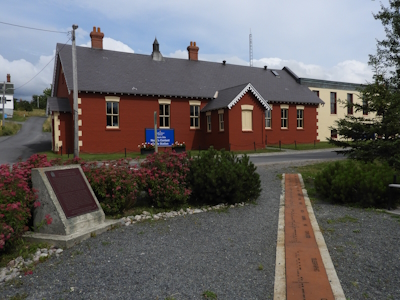Transatlantic Cable Ensemble (C)

Transatlantic Cable Ensemble (C) is part of the Tentative list of Canada in order to qualify for inclusion in the World Heritage List.
The Transatlantic Cable Ensemble comprises both end-points of the first trans-oceanic submarine electric telegraph cable: Valentia Island (Ireland) and Heart’s Content (Canada). The connection became successful in 1866 and improved the speed of communication between the continents significantly. At both sites, the historic cable stations remain.
Map of Transatlantic Cable Ensemble (C)
Load mapThe coordinates shown for all tentative sites were produced as a community effort. They are not official and may change on inscription.
Community Reviews
Argo

We visited the cable station in Heart’s Content, Newfoundland, Canada, in August 2023. This was a nice detour of approximately 100km and 1h50 on our way from Gander to Saint John’s. Heart’s Content is a nice village and the station is right along the main road, easy to find and park by. On one side of the road stand the two buildings of the station itself ; opposite side of the road and immediately by the sea, a tiny memorial garden has been set at the very place where the cable was coming on shore. A long plaque with words in both English and morse code shows the way of the cable from the shore to the station. There are a few benches and free flowing potable water – we had a nice picnic there.
This station is the American end of the first cable laid across the Atlantic for morse communication, the other end being on Valentia Island, Ireland. This cable allowed the first modern and fast communication between Europe and America and started operations in 1866 for a period of 99 years At that time it was seen as the “eighth wonder of the world”. There is a nice introduction movie at the station, explaining why this was a clear technological breakthrough. The cable itself is 4000+ km long ; the floor of the ocean had to be surveyed and mapped first, to determine the best possible path for the cable ; the entire cable was loaded on board of the SS Great Eastern, the biggest and most powerful ship at that time, the only one able to carry it in one piece other the distance (a ship designed by IK Brunel, a genial English inventor, son of a genial French inventor). Heart’s Content cove faces West, not East and Europe, and this was a kind of question mark for me before the visit. The choice of Heart’s Content was a direct consequence of this laying process : the cove here is the deepest and largest of the area and was the best for harbouring such a big ship. A direct link between geography and technology, then.
The cable was a great commercial success. Within a few years, the first sturdy building was built to house the station (red building on the picture). Nowadays, it hosts the oldest artefacts of the museum, from the morse coding station, and a piece of the cable from Valentia end. At the time of World War I, the need for fast communication between Europe and America increased even more. Additional cables were laid and a second, white building was added next to the first one. This second part remained in operation until the station eventually closed in 1965. Equipment on display are still the original ones. In one corner of the room, the ends of the different cables can still be seen coming out of the ground (from and to Ireland, Nova Scotia and from there to New York and rest of America). Interestingly, the cable also impacted significantly the development of this part of Newfoundland : the cable company employed up to 300 operators, with high wages ; the company built several houses for them and their families, a church, a school, tennis courts… These buildings are shown in the movie and pictured of some of the displays of the museum, but we could identify none of them for sure later in the village. They may have just been lost.
This was a short but very interesting visit. Even today, it is easy to figure out the achievement it was at the time and the impact it had on international communication – a clearly underrepresented category on the World Heritage list . There are very few remaining cable stations in the world, with Heart’s Content and Valentia being the only “pair” still visible. This Canadian station is nice and well maintained, the setting by the cove is great. On the down side, the station is not in operation anymore. And we have not been to the Irish station, so we cannot assess this TWHS fully. But if stone markers can make it to the list as part of “Struve arc”, then for sure this station can make it too.
Site Info
- Full Name
- Transatlantic Cable Ensemble (C)
- Country
- Canada
- Added
- 2022
- Nominated for
- 2028
- Type
- Cultural
- Categories
- Human activity - Transport and Trade
- Link
- By ID
Site History
2022 Added to Tentative List
Site Links
Locations
The site has 1 locations
Visitors
8 Community Members have visited.